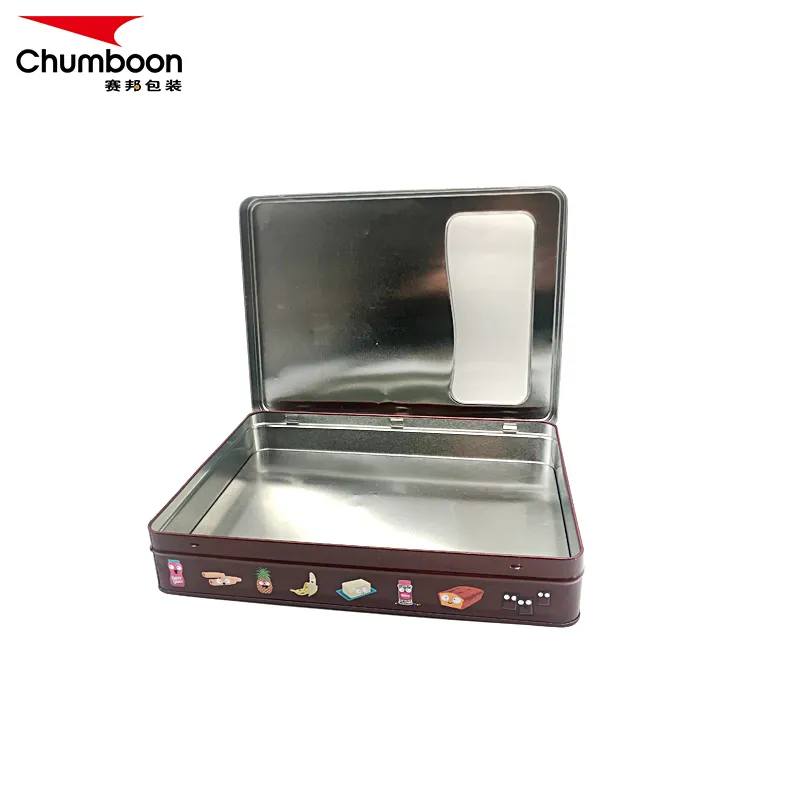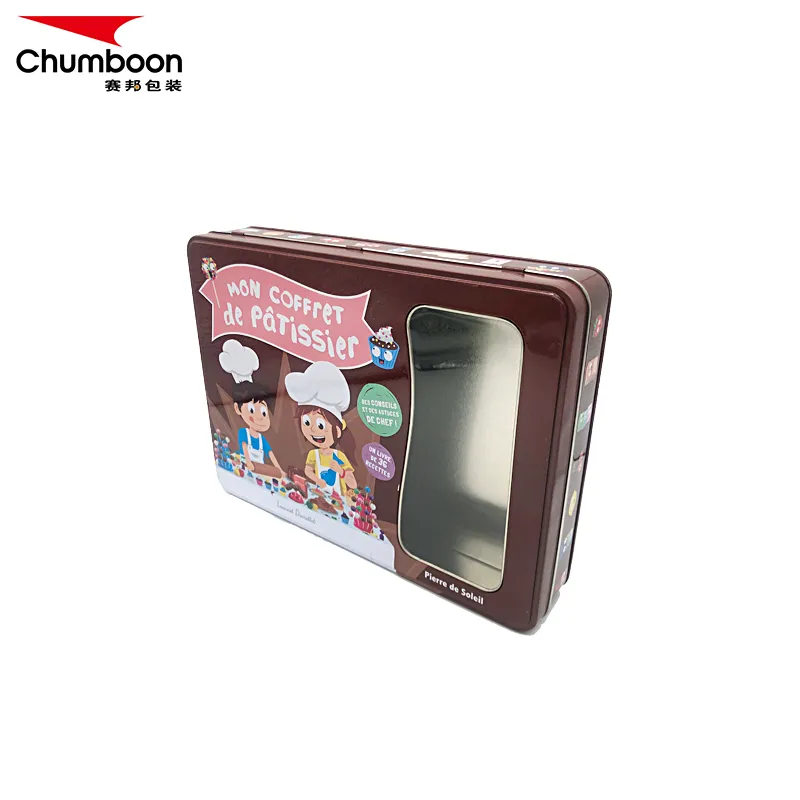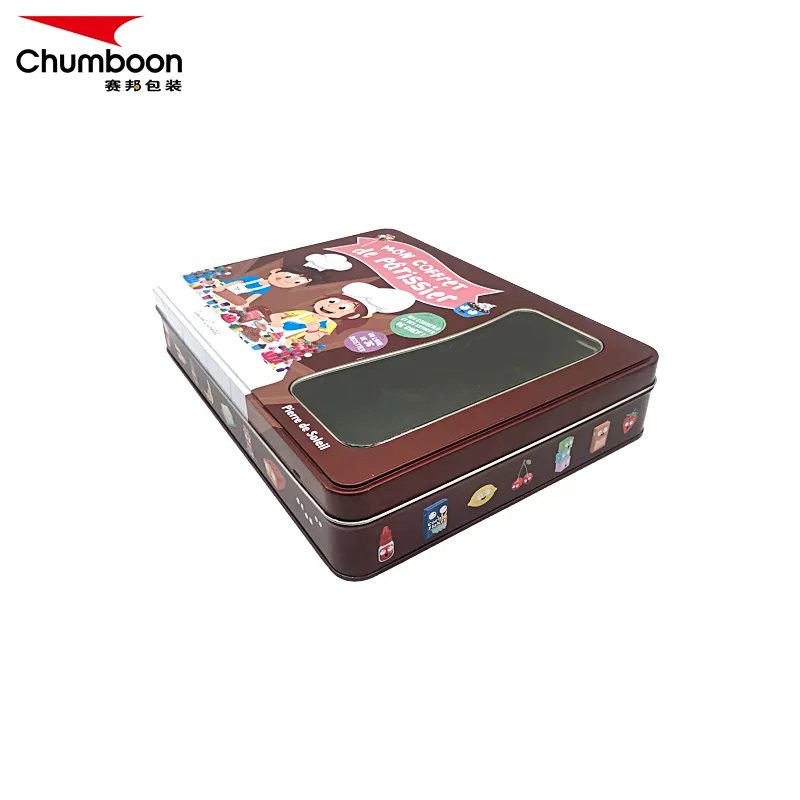As a common food packaging container, cookie tin cans must not only have a beautiful appearance, but also have good sealing properties to ensure the freshness and safety of food. During the production process, how to effectively seal cookie tin cans has become a focus of attention in the food packaging industry.
This article will explore the sealing process and technology of cookie tin cans in depth, and analyze its application and challenges in actual production.

The role and importance of sealing of cookie tin cans
Cookie tin cans are mainly used to store and transport various types of biscuits, cakes and other foods. Its main functions include:
1. Protect food: prevent the entry of external air, moisture and bacteria, and extend the shelf life of food.
2. Maintain taste: prevent food from getting damp or drying, and maintain its original flavor and taste.
3. Easy to store and transport: The sturdy can structure can protect the integrity of food during transportation and storage.
Sealing is one of the most important properties of cookie tin cans. If the seal is not tight, the food is prone to moisture, oxidation, and deterioration, which seriously affects its quality and safety. Therefore, ensuring the sealing of cookie tin can is a crucial part of the production process.
Main technologies and processes for sealing biscuit tin can
During the production process, the sealing of biscuit tin can mainly relies on the following technologies and processes:
1. Pressing seal
Pressing seal is a common sealing method, which is widely used in various packaging containers such as metal cans and plastic cans. The principle is to use mechanical pressure to tightly press the joints of the can body and the lid together to form an effective seal.
● Process flow:
Prepare the can body and lid: Make sure the can body and lid are clean and undamaged.
Positioning and alignment: Place the lid accurately at the opening of the can body to ensure that the two fit tightly.
Pressing equipment: Use professional pressing equipment to apply pressure to firmly press the can body and lid together.
● Advantages:
Good sealing effect, suitable for all kinds of metal and plastic materials.
Simple process and high production efficiency.
● Challenges:
Uneven pressing force may lead to poor sealing.
High matching accuracy requirements for the can body and lid.
2. Glue Sealing
Glue sealing is achieved by applying a layer of sealant to the joint between the can body and the lid to enhance the sealing effect. Commonly used sealants include hot melt adhesive, silicone, etc.
● Process flow:
Glue coating: Apply sealant evenly to the joint between the can body and the lid.
Alignment and pressing: Place the lid on the opening of the can body and apply appropriate pressure.
Curing: Wait for the sealant to cure and form a firm seal.
● Advantages:
Better sealing effect, which can effectively prevent air and moisture from entering.
Suitable for irregular shaped cans and lids.
● Challenges:
The glue coating process has high requirements and the uniformity of the sealant needs to be ensured.
Glue coating equipment and curing time may affect production efficiency.
3. Crimping Sealing
Crimping sealing is mainly used in the production of metal cans. The principle is to curl the edges of the can body and lid together to form a firm joint.
● Process flow:
Prepare the can body and lid: Make sure the edges of both are neat and undamaged.
Crimping equipment: Use professional crimping equipment to crimp the edges of the can body and lid together.
Inspection: Make sure the crimping is uniform, firm, and leak-free.
● Advantages:
Good sealing effect, suitable for metal cans.
The process is mature and widely used in various types of metal packaging.
● Challenges:
The crimping equipment is relatively complex and requires professional operators.
There are certain requirements for the material and thickness of the can body and lid.

Applications and challenges in actual production
In actual production, the sealing of cookie tin cans does not only rely on a single technology, but also requires the selection of appropriate processes and equipment according to specific circumstances. The following are several common practical application scenarios and the challenges they face:
1. Sealing of metal cookie tin cans
Metal biscuit tin cans are often used in high-end food packaging, and their sealing usually adopts a combination of crimping and glue sealing. The crimping seal provides basic mechanical strength, while the glue seal enhances airtightness.
● Application case:
A well-known food company uses a crimping and glue sealing sealing process when producing high-end biscuits. Advanced crimping equipment and high-quality sealants ensure the quality and flavor of the product during long-term storage.
● Challenges:
High requirements for equipment maintenance and operation require professional technicians.
The selection and coating process of sealants need to be strictly controlled to prevent uneven glue layer from causing sealing failure.
2. Sealing of plastic cookie tin cans
Plastic cookie tin cans are widely used in daily food packaging due to their light weight and low cost. The sealing methods are mostly press-fit sealing and hot-melt adhesive sealing.
● Application case:
A large supermarket chain's own-brand biscuit products are packaged in plastic cookie tin cans. By improving the press-fit equipment and optimizing the formula of hot-melt adhesive, efficient production and excellent sealing effects are achieved.
● Challenges:
The press-fit equipment needs to be maintained regularly to ensure uniform pressure.
The curing time and temperature of the hot-melt adhesive need to be strictly controlled to prevent uneven glue layer from affecting the sealing.
3. Sealing of paper composite material cookie tin cans
In recent years, the application of environmentally friendly materials in the packaging field has gradually increased, and paper composite material cookie tin cans have been welcomed for their environmentally friendly and degradable characteristics. The sealing is mostly done by pressing and gluing.
● Application case:
The paper composite material biscuit tin can launched by an environmentally friendly food brand uses environmentally friendly glue and high-efficiency pressing equipment, which not only ensures the sealing performance but also meets the environmental protection requirements.
● Challenge:
The strength and moisture resistance of paper materials need special attention.
The selection and coating process of environmentally friendly glue need to be strictly controlled to ensure the sealing effect.

Conclusion
Sealing is a crucial part of the production process of cookie tin can, which is directly related to the preservation and safety of food. By understanding different sealing technologies and processes, combining actual production needs, and choosing the right sealing method, product quality can be effectively improved to meet the needs of consumers.
It is hoped that the detailed analysis of this article can help industry professionals better understand and apply sealing technology and promote the healthy development of the food packaging industry.

